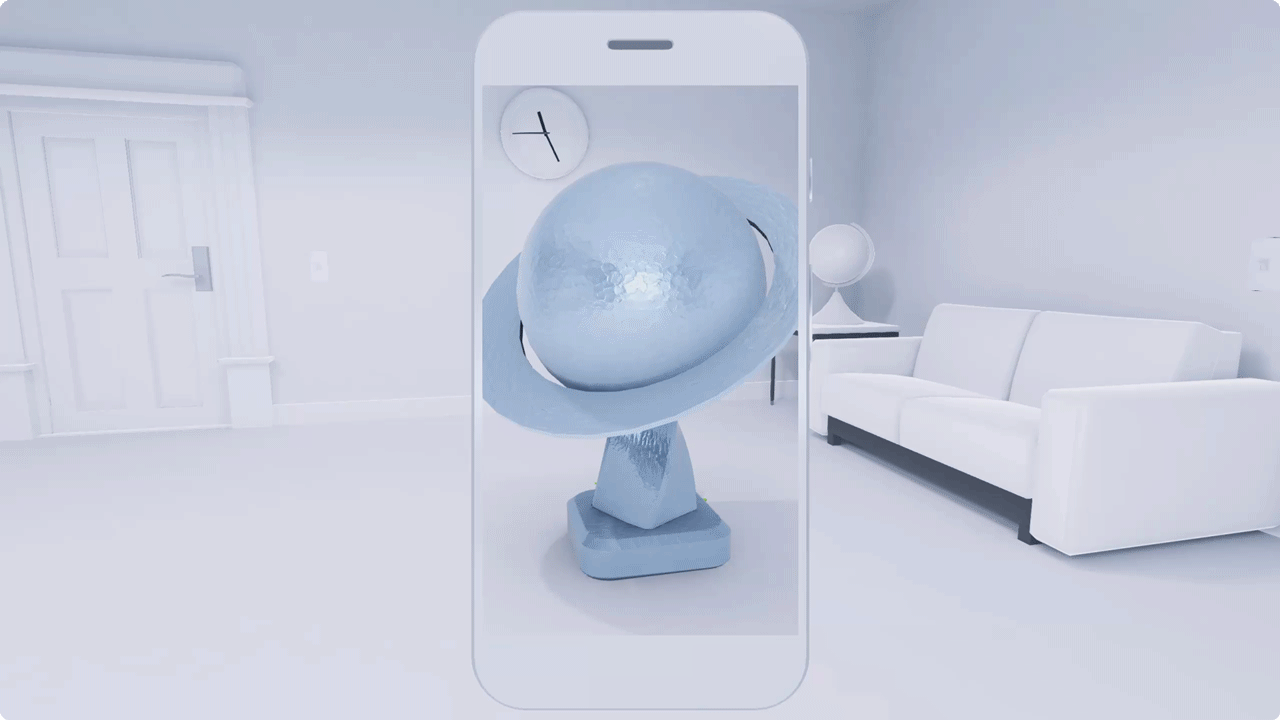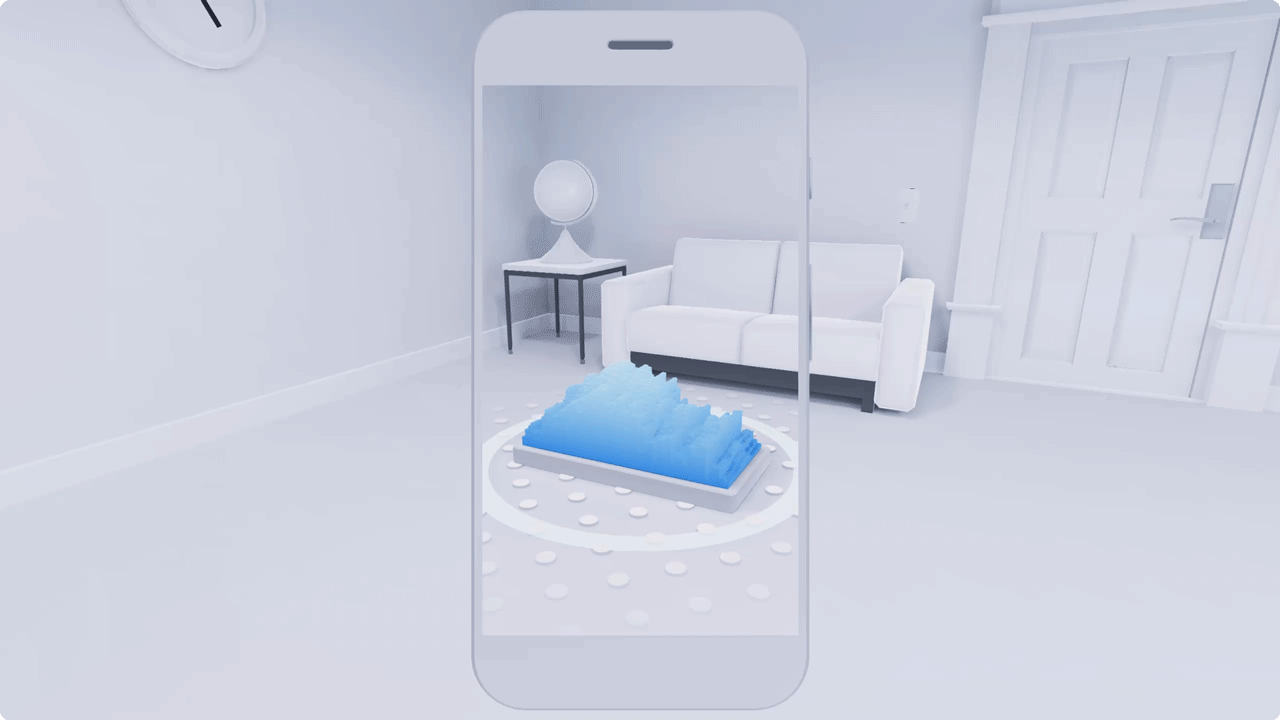鼓励运动
许多用户之前从未体验过 360 度全景虚拟环境。而其他人则开始研究如何在游戏内部四处移动并进行互动。当用户首次体验 AR 时,他们常常会忘记可以四处移动。
如果您的体验需要探索,请提醒用户他们可以四处移动。在这种情况下,为用户提供一个只能通过移动才能完成的目标。在屏幕边缘放置一个虚拟物体,鼓励它们朝向该物体移动。

将物体隐藏在虚拟或实物后面。这是一种鼓励用户运动的有趣方式。
移动的类型
在 AR 体验中,用户可通过四种不同方式移动。
- 双手保持坐着
- 坐着双手移动
- 双手保持静止不动
- 在现实空间中移动
对于每种使用情形,请尝试执行以下操作:
- 让用户知道哪些动作将会触发应用。
- 引导他们了解可能的移动类型和范围。
- 从一种姿势或动作轻松过渡到另一种姿势。
- 舒适设计。请尽量避免让用户做出对身体的要求较高、不适感或过于突然的操作。
- 除非必要,否则尽量不要移动。让用户移动是与他们互动的好方法,但也要让他们能够轻松上手。
无障碍
如果用户无法四处移动,请为他们提供使用您的应用的备选方式。
例如,当用户应该更靠近目标时,请提供另一种访问目标的方式。请尽可能让用户点按对象并使其靠近,或提供十字线来帮助用户触达较远的对象。放置文字和说明,确保用户从各个角度都能看到它们。
随着用户感到疲劳,他们会减少四处移动。

允许用户移动和旋转对象,以防用户无法围绕该对象实际移动

